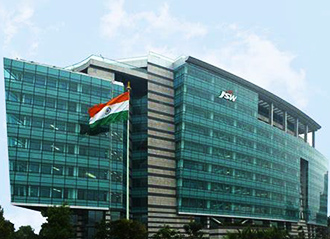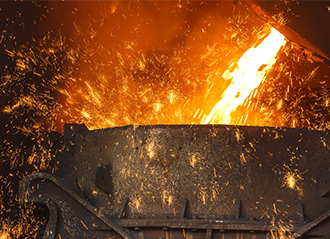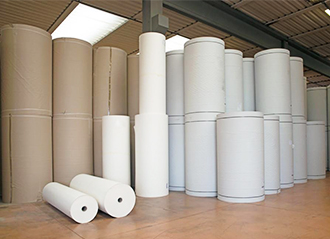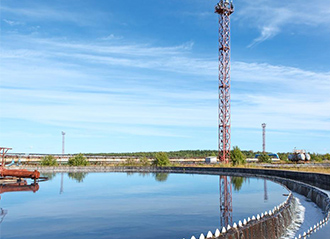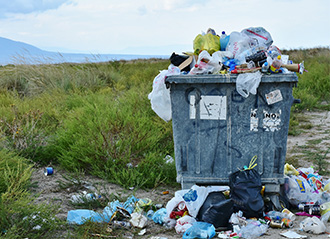
-
Technical Consultation
Preliminary design & consultation for oxygen demands in various occasions.
Customers can have a good understanding of the process principles, practical specifications, typical application scenarios and development trends of VPSA oxygen plants by virtue of our rich project management experience.
As users in different industries have dissimilar demands for product oxygen volume and purity, PKU Pioneer provides preliminary design consultation for the oxygen requirements in diverse cases. Based on clients’ needs, detailed analysis of the investment cost, comprehensive power consumption, delivery time and other economic indicators will be conducted. Customers will be given professional and reasonable implementation suggestions including overall solutions with technical and economical efficiency for energy conservation & environmental protection and greater benefits after integrated evaluation.

-
Project Investigation
More than 300 VPSA-O2 projects available for your visit to know about key indicators of VPSA-O2 plants in China, India, Thailand, Belarus, Indonesia and other countries.
Having taken the first market share in China, PKU Pioneer has over 300 VPSA-O2 projects in the world providing oxygen for Iron & steel manufacturing, non-ferrous metallurgy, solid waste management, glass & fiberglass making, papermaking and other fields. In addition to China as the major market, foreign projects have been spread to more than ten countries including India, Thailand, Belarus, Indonesia, Congo, Spain, and South Korea.
1. Various construction and application situations of VPSA oxygen plant cast certain differences on its applicable building standards. Owing to the reason above, PKU Pioneer is open for visitors who need to better know about the operation status of the previous projects.
2. By full technical communication on key indexes, operating principles, and technical advantages of VPSA plant, visitors can understand the practical running conditions. Thus overall solutions for significant profits can be schemed out according to the client’s demands for oxygen production.

-
Project Implementation
Process design, package & delivery, on-site installation guide and operation specifications free training.
Integrated services are supplied, consisting of process design, package delivery, on-site installation instruction, commissioning and free training for normalized operations.
1. In the early stage of project implementation, PKU Pioneer matches the most experienced manager in the corresponding industry as the person in charge in line with the project characteristics. Meanwhile, a team will be established to define the important operation parts and progress, and issue the implementation plan to ensure smooth and efficient delivery of the project.
2. In the middle, PKU Pioneer specially arranges experts to supervise the production progress and stock preparation to make sure the customer’s plant & accessories, tools, drawings and other materials are completely ready for on-time dispatch.
3. At the end, a professional engineering & technical team is responsible for guiding the installation where the focus is to strictly follow the requirements and procedures of commissioning & installation stipulated in the contract to organize the related personnel to complete the process. Then the installation quality will be checked and monitored.
4. Once installation completed, PKU Pioneer has specialized technicians to undergo on-site debugging to confirm the plant can successfully start up and fully meet the design requirements.
5. After successful start-up, on-site training for the operators will be conducted, clarifying the operating procedures and specifications, and helping customers improve the professionalism and proficiency of the operators for continuous & efficient production.

-
After-Sales Maintenance
24-hour online after-sales maintenance and overhaul consulting, etc. Operation monitoring systems for overseas customers for fault early warning, equipment diagnosis, operation analysis and other services.
PKU Pioneer provides customers with timely after-sales maintenance & overhaul and consultation services to solve problems without delay:
1. At present, PKU Pioneer’s subsidiaries have been building and managing over 10 oxygen factories engaged in gas supply business. Based on our rich experience in oxygen plant maintenance for many years, PKU Pioneer has compiled the “Oxygen Plant Operation and Maintenance Guide” to instruct end users to maintain the plant preventatively, i.e., maintenance must be carried out regularly within a specified period to save the cost to the largest extent.
2. PKU Pioneer can quickly respond to customer’s specific needs such as operation and maintenance issues, replacement & procurement of expired spare parts, operation guidance, etc. to guarantee uninterrupted operation.
3. For overseas customers, PKU Pioneer has developed the intelligent Pioneer Cloud system for operation monitoring which offers services like fault warning, equipment diagnosis, and operation analysis to improve the timeliness of after-sales service and reduce the risk of potential accidents, thus significantly cutting the cost of after-sales operation and maintenance.
4. In addition, PKU Pioneer carries out regular return visits to all customers who fill in the satisfaction survey form and give feedback on operation-related issues. The engineering and technical personnel and R&D performers of PKU Pioneer spare no efforts to optimize and improve the VPSA plant to offer optimal service to our customers.
5. PKU Pioneer has set up special channels for complaints and suggestions. Setting Wechat online collection and communication channel for an example, specialized after-sales service staff can collectively handle customers’ opinions. All the complaints will be submitted to the company through our weekly meetings to ensure all the matters can be properly addressed.
1.We have cutting edge VPSA (Vacuum Pressure Swing Adsorption) and PSA (Pressure Swing Adsorption) oxygen generation technology characterized by low power consumption, stable operation, simple maintenance and intelligent adjustment. Our customers are able to cut the total cost and thus, winning higher profits.
2.With over 300 VPSA and PSA oxygen plants provided for the clients in more than 10 countries such as India, Thailand, Belarus and Indonesia, we’ve taken the first market share in China and are further promoting our frontier to the world. Our units are widely applied in iron & steel manufacturing, non-ferrous metallurgy, paper making, glass making, wastewater treatment and other fields.
3.Distribution partners act as an extension of the PKU PIONEER sales team in markets where PKU PIONEER may not have a direct local presence. They conduct lead generation, marketing and sales activities. Suitably positioned organizations also provide implementation, integration, and support services to PKU PIONEER customers. These organizations work closely with PIONEER to provide best of breed solutions and services to the global market.
4.Offering excellent services including technical consultation, project investigation & implementation, after-sale maintenance & consultation, etc. Customers can obtain fully integrated suggestions and services in accordance with their own project conditions.
The basic principle of Pressure Swing Adsorption (PSA) is to use the difference of the adsorption characteristics of the gas components on solid materials and the change of adsorption capacity with pressure regulations, to achieve gas separation or purification by periodic pressure switch process.
At present, pressure swing adsorption technology is widely used in air separation to produce O2 and N2, in separation and purification of other gases containing CO, H2, CO2 .,etc (such as furnace gases and industrial exhausts), in petroleum cracking gases like ethylene, ethane and in concentrating gas into CH4. The application boundary is gradually expanding with technological progress in this field.
In the 1970s, Union Carbide Corporation industrialized pressure swing adsorption (PSA) oxygen generation technology for the first time using normal pressure desorption (PSA) process. The adsorbent was CaA adsorbent with low nitrogen adsorption capacity and high oxygen power consumption.
In the 1990s, vacuum pressure swing adsorption (VPSA) oxygen production technology using LiX adsorbent became the international mainstream process, which is more suitable for the needs of large-scale installations. The research on oxygen production by pressure swing adsorption in China was carried out almost simultaneously with the international counterparts. However, limited by the low domestic productivity of efficient adsorbents and backward technical research on adsorption vessels and overall processes, the development of domestic PSA oxygen technology was slow, meanwhile, the scale of VPSA plants was stuck in bottlenecks and oxygen generation was accompanied by problems like high energy consumption, frequent replacement of adsorbents, etc., leading to a critical impact on production. During this period, domestic large-scale VPSA oxygen plants were almost all imported and a large amount of foreign exchange was used due to the high price.
In the late 1990s, the gas separation and purification center led by Professor Xie Youchang of Peking University took the lead in creating high-efficiency LiX oxygen adsorbent with high nitrogen & oxygen selectivity and nitrogen adsorption capacity. After stable mass production of LiX oxygen adsorbent, China started integrated process design & manufacture of complete sets of industrial PSA oxygen generation plants for the first time. From then on, the PSA oxygen generation plants produced in China and using efficient LiX oxygen adsorbent were widely applied.
Recently, with the gradual standardization, maturity and growth of the gas market, domestic first-line pressure swing adsorption manufacturers have looked beyond plant sales and focused more on entering the professional service market of onsite gas production & supply in line with their specialized service concept. The oxygen generation plant has achieved intelligent unattended operation, marking a new development period for domestic pressure swing adsorption oxygen generation.
The oxygen-producing adsorbents mainly relies on its selective adsorption to nitrogen and oxygen penetrating function. They’re mainly divided into calcium-based CaA and CaX, and lithium-based LiX. CaA and CaX adsorbents are based on traditional molecular sieves used in the 1980s, therefore the cost is lower, but the energy consumption of producing oxygen is higher, therefore, total loading is several times the amount of LiX. Judging from both the plot area of absorption tower or the long-term operation cost, CaA and CaX adsorbents have evident disadvantages, thus they are only used in small-scale pressure swing adsorption (PSA) operations with atmospheric desorption currently.
LiLSX molecular sieve (LiLSX) adsorbent for oxygen production with high lithium ion exchange rate is the best among LiX adsorbents. Its “nitrogen adsorption capacity” and “nitrogen & oxygen selectivity” are far superior to CaA and CaX oxygen production adsorbents. The higher oxygen yield LiX adsorbent has, the less its loading will be, and finally the operating loading of supporting power equipment will also be decreased accordingly. As a result, the direct investment and operating energy consumption can be reduced and the economic indicators of the oxygen plant can be increased. The first PU-8 high-efficiency lithium-based oxygen adsorbent with industrialized stable mass production in China at the earliest has won the first prize for the National Science and Technology Progress Award of the Ministry of Education.
VPSA (vacuum pressure swing adsorption) is separating oxygen from air by vacuum decompression for desorption.
The pressure swing adsorption oxygen generation uses air as the feed gas which is forced by a blower to pass under pressure through the adsorbent bed. The nitrogen, carbon dioxide and water in the air are adsorbed by the adsorbent, and the remaining components pass through the absorbent for richer oxygen. And then as the pressure is being lowered, the nitrogen, carbon dioxide and water adsorbed on the adsorbent are released and the adsorbent can be regenerated in this way. The reciprocating process makes up the basic principle of vacuum pressure swing adsorption oxygen generation.
Vacuum pressure swing adsorption (VPSA) oxygen plants generally utilize the operating steps shown above to separate and enrich oxygen. In one cycle, each adsorption vessel needs to undergo five steps: “adsorption”, “pressure reduction”, “vacuum desorption”, “Purging” and “pressure increasing”.
(1) Adsorption
After mechanical impurities in the air is removed by the filter, it enters the adsorption tower through the Roots blower. The H2O, CO2, and N2 in the air stay in the adsorbent bed. Since O2 is absorbed little in the adsorbent, the O2 exiting in the vessel will be richer than other entering mixture, and it is discharged from the outlet of the tower. A portion of the oxygen produced by this step is sent to the buffer tank, and the remaining portion is reserved for the next step to regenerate and boost the pressure in the adsorption tower.
(2) Pressure Reduction
In the “pressure reduction” step, oxygen-rich gas passes along the vessel outlet into another one in the “pressure increasing” step, and the pressure goes up.
(3) Vacuum Desorption
At the end of the “pressure reduction” step, in order to desorb the impurities as much as possible, the tower must be evacuated and depressurized. The biggest difference between VPSA and PSA lies in this step, that is, the vacuum pump is used to further evacuate the adsorption tower, which causes the pressure in the tower to decrease when the impurities are released and discharged through the vacuum pump outside.
(4) Purging
In order to desorb the impurities of the adsorption tower more thoroughly, at the end of the “vacuum desorption” stage, a small amount of oxygen will be introduced from another high-pressure tower to revitalize the adsorbent in the tower, at which time the partial pressure of oxygen in the tower rises while impurities’ is further reduced so that the adsorbent is more completely regenerated, which is more conducive to the adsorption in the next cycle.
(5) Pressure Increasing
After “vacuum desorption” and “purging”, the adsorbent in the adsoption vessel is regenerated. At this time, the pressure in the vessel is lowered. In order to quickly recover the pressure for adsorption and ensure that the adsorption front does not move up too quickly, it is necessary to introduce enriched oxygen in the other adsorption vessel in “pressure reduction” step to increase the pressure. The pressure of the vessel reaches the requirements and is ready for the next adsorption cycle when the “pressure increasing” step is completed.
The switching of the above steps is mainly done by the control system and switch butterfly valves. According to the sequential order of each step , the control system switches butterfly valves to control the length of time during “adsorption”, “pressure reduction”, “desorption”, “purging” or “pressure increasing” processes in the adsorption vessel, achieving the separation of oxygen from nitrogen and finally obtaining the required oxygen.
The basic principle of PSA-CO technology is to use the adsorption selectivity of the adsorbent to adsorb CO in the mixed gas, and then to desorb CO by decompression or vacuumizing to achieve the CO separation.
It can be seen from the comparison with the adsorption curve of 5A molecular sieve that the adsorption performance of the copper-loaded molecular sieve is more excellent. On one hand, it has higher adsorbing capacity of CO as a result of the complex adsorption of the active Cu+ to CO. On the other hand, almost no other gases can be adsorbed because CuCl covers the original active centers of the molecular sieve on the surface, and it also reduces the adsorption to CO2 which was highly adsorbed before. Therefore, when processing the feed gas with a low CO2 content, it is possible to directly absorb and separate CO without removing CO2, which is the so called one-stage PSA. The superior performance of Cu-based molecular sieves lies in the fact that their adsorption principle combines physical and chemical methods together, utilizing the large specific surface area of the molecular sieve carrier and the complexation between Cu+ and CO. We dispersed a single layer of CuCl on the inner surface of the molecular sieve, and finally produced highly-efficient copper-loaded molecular sieve.
Compared with the cryogenic separation technology, PSA-CO plant has quite a few advantages: simple operation, short start-up and shut-down time, flexible load adjustment and high automation. It only takes tens of minutes to start up. Meanwhile, according to the downstream needs, load adjustment within the range of 30% to 100% can be realized by simple adjusting at short notice, which can greatly save the cost during commissioning and pilot run of the plant, thus lowering the investment indirectly.
The pressure swing adsorption plant is made up by adsorption vessels, vacuum pumps, compressors, program-controlled valves, etc. The plant is simple and easy to operate, and common employees can master the operation by simple training. The supporting equipment can be purchased and manufactured domestically, which assures the safety of the plant. Also, installation is not difficult, and construction can be completed in a short time.
Considering the above advantages, PSA-CO technology is widely used in the treatment of coal chemical synthesis gases and various complex exhausts. It is applied to treat entrained-bed gas, water gas, semi-water gas, natural gas conversion gas, calcium carbide furnace exhaust, acetic acid tail gas and blast furnace exhaust for production of downstream chemical and industrial products such as acetic acid, butanol, TDI, ethylene glycol, etc.
At present, industrial oxygen production methods mainly include cryogenic air separation oxygen generation, pressure swing adsorption oxygen production and membrane separation oxygen production. Pressure swing adsorption is an advanced gas separation technology standing at an irreplaceable position in the field of onsite gas supply in the world today. Main features of pressure swing adsorption oxygen plant are as follows:
1. simple process, compact structure and low investment
2. high degree of automation- full-automatic operation for 24 hours and remote monitoring through communication interface
3. short start-up and shout-down time (usually can produce qualified oxygen within 0.5h)
4. lower cost than that of the cryogenic oxygen production technology (unit power consumption of 0.33-0.35 kWh/m3 for 100% pure oxygen)
5. operating at normal temperature and low pressure with prior safety
6. flexible load adjustment (The pressure swing adsorption oxygen plant can adjust the load according to the changes of production volume. A single plant can achieve 50%-100% load regulation)
Based on the above characteristics of PSA oxygen generation technology, it is generally believed that cryogenic oxygen production technology has certain advantages in large-scale and high-purity oxygen conditions, and pressure swing adsorption oxygen generation technology, with low cost, easy operation, flexible load adjustment and other outstanding features, is more advantageous in variable and low-purity oxygen use.
(1) Energy Saving
The vertical adsorption vessel is a radial cylindrical-grid-structure vessel. Compared with the axial adsorption vessel, the adsorbent bed is thinner, and the resistance is smaller, thus reducing the air flow pressure and leading to the discharge pressure & power decrease of rotary equipment correspondingly. By calculation and practice, energy consumption of VPSA oxygen plant can be reduced by 10% to 15% using a radial adsorber.
(2) Structural Advantages
The VPSA oxygen generation plant adopts a radial adsorption vessel where the gas flow direction is favorable for adsorption and desorption. Due to the direct influence of airflow velocity on adsorption and desorption for which slower airflow is more propitious. In the adsorption phase, as the feed gas flows from outside to the inside, nitrogen is gradually adsorbed with gradual volume reduction of the gas, and the flowing cross section of the radial adsorber is gradually narrowed from outside to the inside. This structure increases the comprehensive utilization efficiency of the adsorbent and improves the stability of the adsorbent bed at the same time. The direction of the airflow is perpendicular to that of gravity, which effectively reduces the washing-away of the adsorbent and increases its service life.
(3) Small Plot Area
The radial adsorption vessel adopts a cylindrical absorbent bed structure to make full use of the space. The covering area is only half as large as that of the axial adsorber of the same scale.
(4) Better Adaptability of Production Capacity
Radial adsorption vessel doesn’t have limitations of air volume. As the oxygen production capacity increases, it is necessary to increase the amount of feed gas and adsorbent, which can be solved by increasing the radial adsorber height When the equipment diameter is limited by transport or manufacturing.
Due to its low cost, flexible load adjustment, and simple start-up & shut-down, VPSA oxygen generation technology is widely used in industrial production. For example, in the steel industry whose market has improved in the past two years, in order to increase the oxygen enrichment rate of blast furnace, reduce the coke ratio and improve blast furnace production capacity, usually VPSA oxygen plant is chosen as the supplementary oxygen source to reduce the costs and increase production.
The pressure swing adsorption oxygen production plant has been widely used in non-ferrous metallurgy (copper, zinc, lead, gold, nickel smelting, titanium dioxide.,etc.), ferrous metallurgy (blast furnace oxygen-enriched coal injection ironmaking, electric furnace steelmaking, etc.), oxygen-enriched fuel combustion (industrial boilers, glass/glass fiber furnaces, electrolytic aluminum), chemical gas making (synthetic ammonia, methanol, ethylene glycol, etc.), health care, sewage treatment, pulp bleaching, hydrogen peroxide production, ozone generation, aquaculture, carbon black production and other fields.
The VPSA oxygen plant consists of power system, adsorption system, valve system, instrument control system, electronic control system and supporting public & auxiliary system, which are respectively described as follows:
The power system, consisting of Roots blower, Roots vacuum pump, electric motor, air filter, silencer, elastic joint and other ancillary parts, works to provide the positive pressure and vacuum level as required for adsorption and desorption of the adsorbent.
The adsorption system is made up by stuffing, adsorption vessel, and a buffer tank and heat exchanger matched thereto.
The valve system is composed of special regulating valves, switching valves and hand valves. The regulating and switching valves are all pneumatic butterfly valves controlled by PLC. Both adsorber-to-adsorber and adsorber-to-power equipment disconnecting and connecting can be realized by switching valves.
The instrument control system contains the control system and field instruments. The latter is composed of transmitter, oxygen analyzer, orifice flow-meter, vibration sensor, etc.
The electronic control system is made up by the inlet cabinet, PT cabinet, outlet cabinet, soft starting cabinet, uninterrupted power supply, etc.
The public auxiliary system, mostly provided by users, offers the necessary circulating water, soft water, electricity and instrument gas for the VPSA plant.
There are two ways to provide VPSA enriched oxygen to blast furnace:
The First approach is oxygen enrichment after the blower, i.e., the low-pressure oxygen at the outlet of VPSA oxygen plant is pressurized by an oxygen compressor to 6Bar(G), then mixed with ambient air in the cold air pipe at the blast furnace blower outlet to achieve enriched oxygen.
The second one is oxygen injection before the blower. Oxygen is directly fed into the blast furnace blower and then into the blast furnace making use of the pressure difference between the outlet of VPSA plant and the blower inlet. In order to fully mix oxygen and air, an oxygen distributor is required at the front of the blower inlet.
The advantages of oxygen injection before the blower are:
1. Energy Saving
The oxygen injection before the blower saves the energy needed for oxygen compression. Although it is still a controversial issue whether the oxygen injection before the blower shares the blower’s capacity, energy conservation of the technology is affirmative even though the saving amount shows slight differences for each company.
2. Investment Saving
Oxygen compressor is spared in oxygen injection before the blower, which reduces the one-time investment. At the same time, low-pressure oxygen as the conveying medium cuts the manufacturing and construction cost when implementing the low-pressure standards.
3. Safety Assurance
There is no need to install decompression and explosion-proof equipment. Thus, safety of the system is strengthened.
The VPSA oxygen generation plant is characterized by its short operating cycle (generally only tens of seconds), so the exhaust pressure of blower will change rapidly with large fluctuation ranges during operation. Based on the principle of vacuum pressure swing adsorption, the blower is required to satisfy the stability of gas volume under the circumstance, which is the essential condition for stabilizing the gas flow rate in adsorption vessel and ensuring the service life of the adsorbent and the performance of VPSA oxygen production plant.
The Roots blower is a volumetric rotary blower that keeps the two rotors meshed by the synchronizing gears at the shaft end. The concave curved surface of the rotor and the inner wall of cylinder constitutes a working volume. The gas is taken in from the suction port during the rotation of rotor, when moving near and connecting with the exhaust port, the pressure in the working volume suddenly rises and the gas is delivered to the exhaust passage due to the returning of the higher-pressure gas. The two rotors do not touch each other, and the gaps between them are tightly controlled to achieve encapsulation so that the discharged gas is free from lubricating oil.
The most prominent feature is that when the pressure is adjusted within the allowable range, the flow rate changes little. The pressure selectivity is flexible, thus it can transmit gases compulsorily. It has the advantages of simple structure, easy maintenance and long service life.
In addition, it is suitable for gas delivery and pressurization in low-pressure conditions and can also be used as a vacuum pump. Therefore, the Roots blower is suitable for VPSA oxygen production plant, which is a common consensus in the development of VPSA oxygen generation technology over the years.
VPSA oxygen plant suppliers usually provide overall materials including instructions for use, maintenance manuals and troubleshooting manuals. The structure of VPSA plant is simple- the rotary equipment only consists of a blower and a vacuum pump which are general-duty equipments with simple maintenance, therefore, maintenance of VPSA oxygen plant is generally composed of two parts: inspection (including fault handling) and replacement of vulnerable parts.
According to the information online, VPSA oxygen plant has the advantage of simple and easy maintenance. At the same time, all the parts are controlled by PLC with high automation. In theory, unattended operation can be achieved.
The maintenance of VPSA oxygen plant is relatively simple, and it is easy to handle the faults. However, it is still recommended to replace the wearing parts such as valve seals on time in accordance with the requirements. Based on the association’s investigation, almost all domestic and foreign on-site gas production companies require regular maintenance on the VPSA plant, and regular replacement of the sealing ring whether it is worn or not.
Statistics have shown that regular maintenance is beneficial to reduce the long-term operation cost and prolong the service life of the VPSA oxygen plant.
The operating cycle of the VPSA oxygen production process is very short, generally less than 1 min. In one cycle, each adsorption vessel needs to experience the steps of adsorption, pressure reduction, desorption, purging, even pressure increasing, etc.
Key valves switch on and off once in each cycle, which is pretty frequent, so they are required to be switched quite fast in order to improve the working efficiency and effective utilization of the oxygen plant.
Therefore, the valves used in VPSA oxygen plant must feature the following characteristics:
1. high switching speed
2. good sealing performance
3. long service life under frequent and fast switching conditions
4. oil-free operation
At present, domestic VPSA plants generally adopt special double-eccentric pneumatic butterfly valves whose actuators and pneumatic components are made by famous brands such as Metso and SMC to improve the reliability of the valves. The valve has the following characteristics:
1. Wide Range of Caliber: DN100-to-DN900 diameter range
2. High Switching Speed: 0.3 to 0.8 second/time
3. Sealing Structure: lip-shape sealing structure with two-way zero leakage and self-repairing after wearing
4. Sealing Materials: reinforced PTFE material with high wearing resistance
5. Power Drive: driven by low-pressure, clean and oil-free instrument gas, which is relatively easy to obtain.
6. Maintenance: The valve is small in size, light in weight, easy to maintain. The maintenance cost is lower than that of other types of valves.
The VPSA plant is a complete set of systems. On the premise that the process design is reasonable, the supporting equipment is properly selected and the operation is smooth, the power consumption of the entire unit will be ensured the lowest. Specifically, related factors are as follows:
1. Whether the adsorbent is efficient.
The most efficient adsorbent currently on the market is the PU-8 lithium-based adsorbent, whose oxygen production per ton is the highest in the industry. The loading is less for the same oxygen production so that the resistance for the gas to pass through the adsorbent bed will be smaller, thus finally reaching a lower level of energy consumption.
2.Whether the process is reasonable.
The adsorbent is the core part of a plant and the maximum performance of the adsorbent can be ensured with reasonable process design, which includes adsorption temperature, pressure and cycle, desorption pressure and other indicators’ settings.
3.Whether the power equipment matches the whole VPSA plant.
The main power of the whole plant is consumed by power equipment. If the power equipment is too small, the oxygen production won’t meet the design specifications and if it is too large, the unit power consumption will be higher. In addition, smooth running of the supporting equipment is also important. If the valve leaks, the signal transmission of the instrument isn’t stable, etc., the operation of the entire system will be affected.
In summary, the power consumption of the VPSA oxygen production plant depends on the cooperative operation of the various components of the system.
The reliability of VPSA oxygen production plant is mainly reflected by factors such as the failure rate of matching components, the rationality of the process design and the maintenance during downstream usage.
First of all, high-efficiency & durable adsorbent and reasonable process design. The core of VPSA technology is the adsorption efficiency and performance of the adsorbent. Superior adsorbent will have a high separation coefficient, achieving effective gas separation easily. At the same time, outstanding working durability is also indispensable. Generally, service life for more than 10 years could be considered long. In addition, reasonable design of process and complete plant is closely connected with the matching with downstream oxygen application. Reasonable internal process design of the system will ensure low energy consumption and steady operation. The system’s matching with the downstream equipment will also affect its operation time and performance.
Secondly, whether the supporting components like program-controlled valves and power equipment are produced by reliable manufacturers. If the rotary equipment or valves are produced by under-performing manufacturers in order to lower the cost, frequent malfunctions will be caused and the stability of the whole plant will be affected.
Finally, rich engineering experience can guarantee good operating conditions and high operating rates in different industries, atmospheric and climatic circumstances.
In summary, the reliability of VPSA oxygen production plant requires a number of factors such as excellent supporting components, reasonable processes and rich engineering experience.
1. Blast furnace oxygen-rich coal injection. There are two conventional ways for iron & steel smelting. The first is to use the iron ore in blast furnace to smelt the iron of the compound in nature into zero-valent iron, which is the pig iron we often say. The pig iron is then refined through a converter to become a variety of alloy steels or stainless steels that we often see in our daily lives. At the stage of smelting pig iron through blast furnace, we generally adopt pressure swing adsorption technology to provide enriched oxygen by adding oxygen to the blast furnace to optimize the smelting conditions and reduce the cost. Finally we obtain the high-quality pig iron.
2. Electric furnace smelting is the second way. The scrap iron we used in our lives is sorted out and fed into the electric furnace after being reclaimed by the recycling station. In the electric furnace, we use high-purity enriched oxygen for high-temperature smelting to get finished steel.
3. In addition, pressure swing adsorption technology is also applied in the tail gas treatment of smelting furnaces such as blast furnaces and converters mentioned above, which is mainly to adsorb the useful CO by pressure swing adsorption technology, and then purify and refine it for the synthesis reaction in chemical and other fields.
The pressure swing adsorption technology is mainly applied in C1 chemistry in the chemical industry. Does anyone know where objects like daily beverage bottles, sofas, quick-drying T-shirts come from? They were all produced by petroleum cracking and then through other synthesis procedures step by step. As we know China is rich in coal and poor in oil. In resent 20 years, the “coal chemical industry” that has been developing is to use coal instead of oil to produce our daily necessities.
So how does the coal chemical industry turn coal into the clothes we wear, the seats we sit on and the water cups we use? The principle is: the coal is gasified through a gas making furnace where the most useful gases such as CO and H2 are separated by pressure swing adsorption technology and then put into use in chemical synthesis, which will eventually produce those daily necessities. In this process, pressure swing adsorption technology must be adopted to solve some technical difficulties. For instance, to achieve efficient separation of CO from N2 or CH4, the pressure swing adsorption technology using copper-based adsorbent is on the must list. China has independent property rights for the technology and has stayed ahead of the international level.
Pressure swing adsorption technology is mainly applied to the recycling of industrial tail gas rich in CO. People may not know that China is the world’s largest manufacturer of steel, calcium carbide and yellow phosphorus, which accounts for more than half of the world’s production. A large amount of industrial exhaust will be released when manufacturing these fundamental industrial products. In the past, these industrial tail gases were discharged into the air directly or after combustion. With the increasing load and emitted gases, a gradual deterioration of the atmospheric environment will take shape, such as haze and acid gases which may even affect the crop growth.
The exhausts like CO mentioned above are waste gases in the industry. Most enterprises treat them by combustion generally, which however not only causes a large amount of carbon dioxide to be discharged into the atmosphere forming the greenhouse effect but also is an inefficient utilization of energy. If these exhaust gases are purified by pressure swing adsorption technology until the purity of CO is increased to 99% or more, with high utilization value, they can be subsequently applied in chemical synthesis. After a series of chemical reactions, they finally become the plastic bottles, quick-drying T-shirts and other commodities in our daily lives. It’s good for both energy conservation and emission reduction, thus promoting the environmental protection.


